10 trips of a lifetime
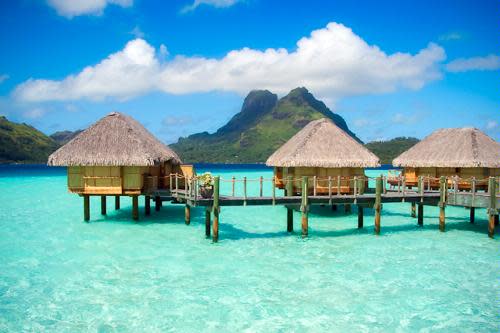
We all take simple vacations, but when was the last time you traveled somewhere that changed who you are and how you see the world? These 10 places, while not always easy to reach, inspire travelers to rethink – and perhaps better appreciate – the world around us.
Bora Bora, French Polynesia
Nothing says "ultimate honeymoon" like Bora Bora. Lush mountains slope down to a lagoon striped with bands of clear water ranging from deep blue-green to neon-turquoise. Around the lagoon, palm-fringed atolls and coral reefs trace a wispy pentagon, and everywhere, suspended boardwalks lead like tentacles to overwater bungalows for newlyweds and other romantics. Too perfect a tropical getaway to be a secret, Bora Bora is nevertheless remote and expensive enough that the island's luxurious mystique has remained intact.
Less touristy and even more stunning is Moorea – inspiration for the mythical island of Bali Ha'i in James Michener's Tales of the South Pacific, made popular by the Rodgers & Hammerstein musical. Once you behold its beauty in person, you may find it hard to believe the scenery isn't computer-generated: Jagged mountain contours are so dramatically faceted as to seem man-made, and the dense vegetation blanketing every surface of the island has the soft, rich look of green velvet. If the landscape isn't dreamy enough, visitors can learn the art of growing black pearls or traditional tattooing at Moorea's Tiki Theatre Village, a reconstructed Polynesian village. Or visit a vanilla plantation in cliff-bounded Opunohu Valley. Or simply make friends with local residents, who still have time to stop and chat with inquisitive visitors.

Cappadocia, Turkey
Three volcanoes created the hauntingly beautiful landscape of Cappadocia, in central Turkey, 515km (320 miles) southeast of Istanbul. The first eruption spread delicate tufa, which wind and water sculpted into ever-evolving domes, hollows, clefts, and cones. Later eruptions scattered harder lava. Now, as the soft underbelly erodes, huge boulders teeter upon slender tufa towers known as "fairy chimneys." Locals still burrow homes into the soft rock, as they have since the Paleolithic era. Some have opened these singular dwellings as guest houses, extending genuine hospitality to travelers about to venture to the region's top sights.
South of Nevsehir are Derinkuyu and Kaymakli -- two of the most impressive underground cities dug by invaders as early as 2000 B.C. as they traversed this crucial crossroads between the East and the West. From the Christian era, the Goreme Open Air Museum encompasses 30 painted churches from the 2nd century A.D. near Goreme. More recent additions to the landscape are the medieval caravansaries, such as the Agzikarahan (now a carpet market), where traveling merchants lodged as they traveled the Silk Road in the 13th century. Now a carpet market, Agzikarahan draws today's weary travelers for a glass of tea, some haggling, and a glimpse of Ottoman architecture at its height.

Iceland
The terrain of Iceland, among the world's most dynamic and otherworldly, is still in the process of being created before your eyes. The earth steams and bubbles. Volcanoes rise like islands in a sea of sand. Lava cracks and cools into thousands of never-before-seen shapes. Waterfalls drop from heath-covered mountains with spiked ridges and snow-capped peaks. Cows, sheep, and ponies graze on velvety green pastures. Daylight never ends in summer, with alternating periods of rain and sunshine, marble skies, and heavy mists made for romantics who know that only on a misty day can you see forever.
And then there are the Icelanders: 100% literate, with Europe's lowest infant mortality rate and the highest rate of births outside marriage; and the vibrant nightlife in Reykjavik. The force of life in the people of Iceland – as in the landscape – is incomparable.

Bhutan
The captivating kingdom of Bhutan, rooted in the traditions and beliefs of a fast-disappearing Buddhist universe, opened its doors warily to the outside world only little more than a quarter-century ago. Those who trickled in found a place like no other. Its mountain landscapes, with holy peaks unclimbed to avoid disturbing the gods, are as pristine as its primeval forests, a naturalist's dream. Roads are few and precipitous, but at almost every turn there is something to see: traditional half-timbered farmhouses in sheltered valleys, arresting fortress monasteries on hilltops, rare animals and birds, and groves of blooming trees and earthbound flowers.
Valleys are colorful (sometimes raucous) places, suffused with the scent of butter lamps and enlivened by flocks of unruly novices, disputatious monks, and altars piled high with offerings from the rural poor, who come to spin prayer wheels, finger beads, or seek advice.
Never colonized by Western powers, Bhutan remains deeply independent, the last Tibetan Buddhist monarchy not swallowed up by China, to the north, or India, to the south. Despite the arrival of the country's first luxury spa resorts, one visits Bhutan on Bhutanese terms, in limited numbers, for immersion in an encompassing Buddhism that touches everything.
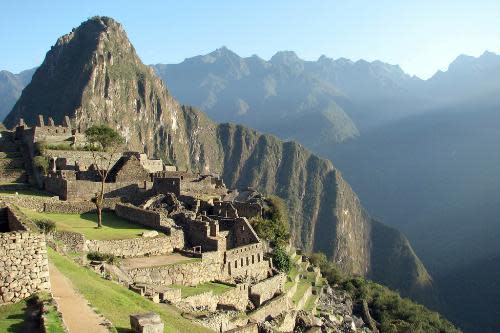
Machu Picchu, Peru
The Inca Trail footpath is an ancient Andean passage from Cusco, capital of the Incan empire, through the Sacred Valley, to the 15th-century ruins of the civilization's crown jewel, Machu Picchu. Cleared from centuries of thick forest growth since historian Hiram Bingham introduced it to the world in 1911, this fabled lost city of the Incas defiantly guards its mystique.
Did it serve as a citadel? An astronomical observatory? A ceremonial city or sacred retreat for the emperor? Why did the Incas construct, inhabit, and then deliberately abandon it in less than a century? How did the Spanish conquistadors miss it? Whatever its intended purpose, Machu Picchu remains the world's greatest example of landscape art, sitting gracefully like a proud saddle between two enormous Andean peaks.
Visitors come to run their hands over the massive, smoothly cut stone, which fit together seamlessly without mortar. Other travelers make it a point to experience daybreak, when the light creeps over Machu Picchu's jagged silhouette and slowly, with great drama, illuminates the ruins row by row, building by building. Most spectacular is the winter solstice sunrise, when sun rays stream through the Temple of the Sun window, setting the stone at the center of the temple ablaze.

Namib-Naukluft Park, Namibia
"Surreal" is the word most often used to describe the textured landscapes of Namib-Naukluft Park in Namibia. Its purple gravel plains are carpeted in soft green grass after the rains. Golden dunes rise up from the sea. The iconic Sossusvlei dunes, a series of burnt-red and deep-orange pyramids, tower some 300m (984 ft.) above the white clay pan into which the Tsauchab River has its annual petit mort (little death).
A little larger than Switzerland, the planet's oldest desert and fourth-largest conservation land is best experienced by car, with the windows open and the hot wind in your hair. It's not a wildlife destination per se, but step away from the gravel roads and you'll encounter some of nature's more interesting species, cleverly adapted to these hyper-arid conditions.
Head south from Windhoek, the capital, and spend the night at one of the fabulous safari camps in Namib Rand, the private reserve adjacent to the park, just an hour from Sossusvlei. Then head east to the lesser-known but equally captivating Naukluft Mountains, source of the Tsauchab's waters, where crystal streams fill jade-green rock pools. Finally return via the black boulders of the Juiseb Canyon to Swakopmund, where you can follow the dunes south to Sandwich Harbor for the refreshing sight of water teeming with flamingos and pelicans.

Xian, China
A train crossing of China's Silk Road takes you through a cultural journey from the Far East to the Mideast, from modern Chinese megacities through an ancient arid desert plateau to stunning mountains. For an ideal 10-day trip, you can follow the ancient trade route used from the 1st century B.C. to the 10th century A.D. starting in Xian, home of the Terra Cotta Warriors. Along the way, travelers can make stops at the official end of the Great Wall at Jiayu Guan, the Mogao Buddhist caves near Dunhuang, the aforementioned desert basin of Turpan, and the provincial capital Urumq – an ideal base for a day trip to Heavenly Lake.
Time your travels so you hit Kashgar – the end of the line – on a Sunday, when its bustling market comes to life. Or, opt for a five-hour drive to the even more impressive Sunday market in Khotan, the largest in Central Asia.
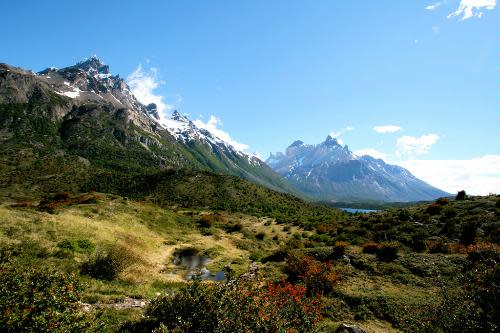
Parque Nacional Torres del Paine, Chile
Torres del Paine is the crown jewel of Chile's national park system. Lakes of milky greens and blues ("paine" is the Tehuelche word for "blue"), gentle valleys, and frigid hanging glaciers captivate hikers who come to walk the park's circuit of well-maintained trails – but nothing has more power to impress and compel than the Paine Massif – a series of jagged peaks thrown up from the earth 3 million years ago.
This being Patagonia, weather conditions are also impressive and instantly changeable, from warm sunny pauses to screaming winds that can prevent anyone from walking exactly upright. The best time of year for hiking is late December through February, when weather conditions are at their most mild and daylight is longest, but intrepid travelers visit year-round.
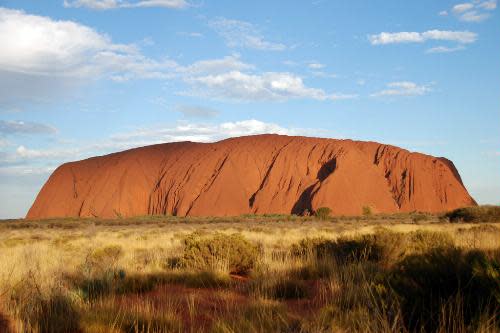
Uluru-Kata Tjuta National Park, Australia
Why travel so far to look at a large red rock? Because it will send a shiver up your spine. Because it may move you to tears. Up close, Uluru is more magnificent than you can imagine. Immense and overwhelming, this area has what's described as a "spirit of place" here.
In photos (which never do it justice), "The Rock" looks smooth and even, but the reality is much more interesting – dappled with holes and overhangs, with curtains of stone draping its sides, creating little coves hiding water holes and Aboriginal rock art. Depending on the angle and intensity of the sun, the color changes from pink to a deep wine red. And if you are lucky enough to be visiting when it rains, you will see a sight like no other. Here, rain brings everyone outside to see the spectacle of waterfalls created off the massive rock.
But don't think a visit to Uluru is just about snapping a few photos. You can walk around the Rock, climb it (although we say don't; even the local Anangu people consider it too dangerous), fly over it, ride a camel to it, circle it on a Harley-Davidson, trek through the nearby Olgas, and dine under the stars while you learn about them. Of the many ways to explore it, one of the best is to join Aboriginal people on guided walks. Just do yourself one favor: Plan to spend at least two days here, if not three.
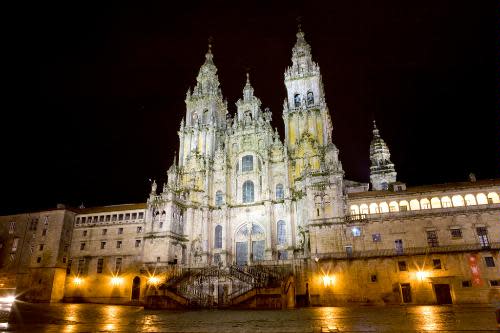
Santiago de Compostela, Spain
Most vacations aren't exactly life-altering, but a surprising number of people who trek the Camino de Santiago come away from the experience feeling fundamentally changed. While it is physically a long and arduous walk over a 500-mile course, most of the labor is more … metaphysical. It's a spiritual journey that emulates the path walked in the year 950 by a French monk to visit the remains of the Apostle St. James in remote Santiago de Compostela. He described his journey in what is considered to be the first travel guide, the Codex Calixtinus.
One thousand years later, pilgrims are still tracing his footsteps, starting in Navarre and ending in Galicia, usually after a solid month of walking, for the full effect. But it's also possible to undertake only sections of the journey, depending on your time allowances. You choose your own path.

